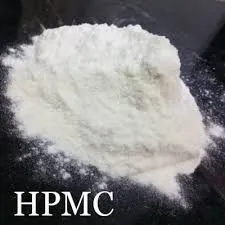
నవం . 16, 2024 12:27 Back to list
Hydroxypropyl Methylcellulose HPMC Applications and Benefits in Various Industries
Understanding HPMC (Hydroxypropyl Methylcellulose) Applications and Benefits
Hydroxypropyl Methylcellulose (HPMC) is a versatile hydrocolloid derived from cellulose, which is a natural polymer found in plant cell walls. HPMC has garnered significant attention in various industries, owing to its unique properties, including its ability to form gels, emulsify, and act as a thickening agent. This article explores the structure, properties, and applications of HPMC, highlighting its significance in modern formulations.
Structure and Properties
HPMC is synthesized by reacting cellulose with propylene oxide and methyl chloride, leading to a methylated and hydroxypropylated cellulose derivative. This chemical modification enhances its solubility in water and makes it suitable for numerous applications. HPMC is non-ionic, which means it does not carry any charge, allowing it to function well in diverse pH levels and ionic strengths.
One of the standout features of HPMC is its exceptional film-forming ability. When dissolved in water, it forms a viscous solution that can transition into a gel upon cooling. This gelation property, along with its high viscosity even at low concentrations, makes HPMC ideal for controlled-release formulations in pharmaceuticals, food industry applications, and cosmetics.
Applications in Various Industries
hpmc hydroxypropyl methylcellulose

1. Pharmaceuticals In the pharmaceutical industry, HPMC is mainly used as an excipient, a substance that helps to deliver the active ingredients of medications efficiently. It is extensively employed in controlled-release drug formulations, as it regulates the release rate of drugs over extended periods. Additionally, HPMC acts as a binding agent in tablet formulations, thereby enhancing the stability and bioavailability of drugs.
2. Food Industry HPMC is regarded as a food additive (E461) and is commonly used as a thickener, emulsifier, and stabilizing agent in various food products. It contributes to improved texture and mouthfeel, making it valuable in products like sauces, ice creams, and baked goods. Its ability to form a gel aids in creating gluten-free products and enhancing the nutritional profile of food.
3. Cosmetics and Personal Care In cosmetics and personal care products, HPMC serves multiple purposes, such as a thickening agent, emulsifier, and film-former. It provides a smooth texture, enhances the spreadability of creams and lotions, and contributes to the stability of emulsions. Its non-toxic nature makes it safe for use in a variety of skin care formulations.
4. Construction HPMC is also integral to the construction industry as a water-retaining agent and thickener in cement-based products like mortar and tile adhesives. It improves workability and adhesion while reducing water loss during the curing process.
Conclusion
The multifaceted nature of Hydroxypropyl Methylcellulose (HPMC) makes it an indispensable ingredient across various sectors. Its unique chemical and physical properties enable its application in pharmaceuticals, food, cosmetics, and even construction. As research and development continue, the potential applications for HPMC are likely to expand, showcasing its significance in enhancing the quality and efficacy of a wide array of products.
-
Versatile Hpmc Uses in Different Industries
NewsJun.19,2025
-
Redispersible Powder's Role in Enhancing Durability of Construction Products
NewsJun.19,2025
-
Hydroxyethyl Cellulose Applications Driving Green Industrial Processes
NewsJun.19,2025
-
Exploring Different Redispersible Polymer Powder
NewsJun.19,2025
-
Choosing the Right Mortar Bonding Agent
NewsJun.19,2025
-
Applications and Significance of China Hpmc in Modern Industries
NewsJun.19,2025







